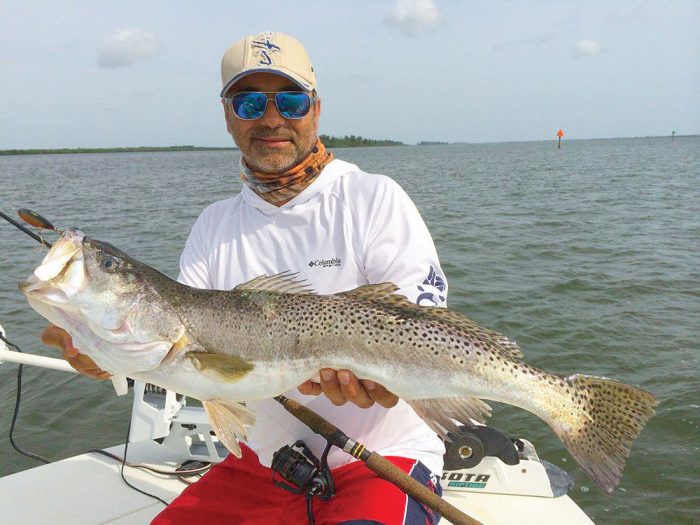
No matter where you are in North America, winter brings cold winds and sore throats to all. And the effect is even more brutal on fish than men. Immersed in the water, in an unstable environment that changes quickly, they have no choice but to exist the best they can where they are.
There’s no option for fish to go on a cruise in the Bahamas to tan their scales in the tropical sun. And the shallow-water inhabitants feel the impact even more than the deep-water ones, given that the skinny depth they live in can drop in temperature sharply. Their behavior can turn sluggish, but they still need to feed. It is, therefore, crucial to adjust the lure’s action to their temperature-driven mood.
Seatrout and redfish will dive into the grass to limit their exposure to colder water, but they will still have an eye on what’s going on, as a prey in their stomach is still necessary to fuel them.
What I like to do is fish slowly, twitching suspending baits once or twice between long pauses. And sometimes these pauses are truly long pauses. I’ve found that’s one thing most people have a hard time doing. Most are unable to pass the two or three-second mark without feeling the need to twitch their bait again.
When I’m in a spot that’s worth it, or if I catch a glimpse of a nice fish, I will hold my suspending Stick Shadd still for up to 30 seconds. It might feel like an eternity; it might feel worthless, but some of my best inshore catches came on such long, 15- to 30-second pauses. I keep the rod tip down close to the water, and I don’t rely on feeling a bite. I leave a little slack in my line, no more than 6 or 8 inches, and watch the line very closely. Most of the time the bite is just a tiny tap that is hard to feel but very easy to see on the line. If the line moves just an inch or two, that’s it. Set the hook without delay. You might be surprised at the trophy fish you’ll catch with such minimal action.
Another technique that produces well for me on cold water is simply to cast and retrieve my suspending twitch bait super slowly. I sometimes retrieve it so slowly that it won’t even have any side-to-side action at all. Yep, you read that right. Just the lure moving through the water straight ahead and slowly is the right presentation on some days. In cold water, it will often out-produce the typical action-packed movement of this type of bait.
It may seem surprising, but it’s efficient. In both cases, a suspending bait is a key technique, as well as having the patience and confidence to resist working it too quickly or erratically.
Patrick Sebile is the owner and lure designer of Sebile Innovative Fishing (www.sebile.com).